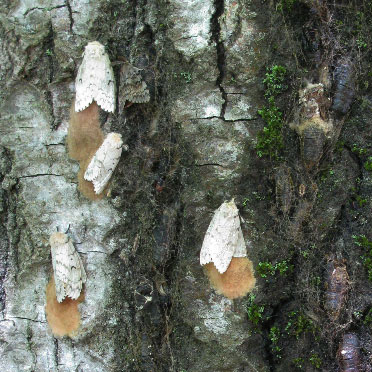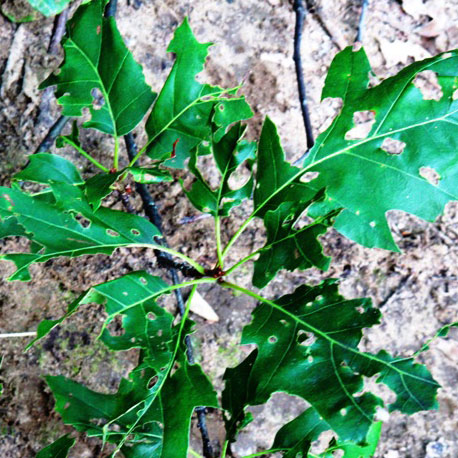Bears want to avoid humans. Most bear encounters are not aggressive and attacks are rare. Visit the Ministry of Natural Resources website for more information or call 1-866-514-2327 to report a bear sighting.
Garbage is the number one reason bears are drawn onto properties, followed closely by bird seed, suet and nectar, and barbecues. Whether you are business owner with excess garbage, a farmer, or just visiting the cottage, there are a few simple precautions you can take to avoid problems with bears and other animals too.
For Emergency situations
Call 911 or your local police if a bear poses an immediate threat to personal safety and exhibits threatening or aggressive behaviour, such as:
- enters a school yard when school is in session
- stalks people and lingers at the site
- enters or tries to enter a residence
- wanders into a public gathering
- kills livestock/pets and lingers at the site
Police will respond first to an emergency situation, but may request assistance from the Ministry of Natural Resources and Forestry during daylight hours.
For Non-emergency encounters
Call the toll-free Bear Wise reporting line at 1-866-514-2327 (TTY 705-945-7641 ) if a bear:
- roams around or checks garbage cans
- breaks into a shed where garbage or food is stored
- is in a tree
- pulls down a bird feeder or knocks over a barbecue
- moves through a backyard or field but does not linger
This line operates 24 hours a day, seven days a week, from April 1 to November 30.
Any concerns about other nuisance wild life (coyotes, foxes, bears) should be directed to the Ministry at 1-800-667-1940.
General Bear Wise Tips
When bears are caught off guard, they are stressed, and usually just want to flee.
Stop. Do not panic. Remain calm.
Generally, the noisier the bear is, the less dangerous it is, provided you do not approach. The noise is meant to “scare” you off and acts as a warning signal.
Do
- Slowly back away while keeping the bear in sight and wait for it to leave.
- If the bear does not leave, throw objects, wave your arms and make noise with a whistle or air horn.
- Prepare to use bear spray.
- If you are near a building or vehicle get inside as a precaution.
- Drop any food you may be carrying and slowly move away.
- If a bear is in a tree, leave it alone. Leave the area. The bear will come down when it feels safe.
Do not
- Run, climb a tree or swim.
- Kneel down.
- Make direct eye contact.
- Approach the bear to get a better look.
- Attempt to feed a bear.
Be Bear Wise at Home or the Cottage
Most human-bear conflicts occur when bears are attracted by smells and rewarded with an easy meal. When bears pick up a scent with their keen noses, they will investigate it – even at your home or cottage. If bears are rewarded with feasts of bird food, garbage or pet food, they will return as long as the food source is available. It takes all residents working together to eliminate these attractants and to stop bear problems.
Here are some tips to help avoid these unwanted visitors:
- fill bird feeders only through the winter months
- never purposely feed bears (or other wildlife) or try to approach them
- only put garbage out on garbage day, not the night before
- store garbage in a bear-resistant container with a tight-fitting lid, secure shed or garage. Do not store garbage in plywood boxes, old freezers or vehicles
- do not use outdoor fridges or freezers, including beverage fridges, as these may attract bears to your property
- do not stockpile garbage; take it to an approved waste disposal site regularly
- keep meat scraps in the freezer until garbage day
- remove grease and food residue from barbecue grills, including the grease trap, after each use
- do not put meat, fish or sweet food (including fruit) in your outdoor composter
- pick all ripe fruit off trees, and remove vegetables and fallen fruit from the ground
- encourage your neighbours to practise Bear Wise habits
When leaving your cottage make sure to:
- remove your garbage: take it home or drop it off at an approved waste disposal site on your way
- use a strong disinfectant to eliminate all odours from garbage and recycling containers and lids
- never discard cooking grease outside: place it in a container with a lid, transfer it to a plastic bag and include it with other properly stored garbage
- take your barbecue with you when you leave the cottage, or clean it and store it in a secure shed
- do not leave any food or food scraps outdoors for pets or other wildlife
- when packing up, remember to remove all the food from the inside of your cottage—even a box of pudding can attract a bear
- do not leave scented products outside such as suntan lotion, insect repellent, soap and candles
- close and lock all windows and doors
- if you are away for an extended period of time, have someone you trust check in and look for signs of a bear visitor or break in
- if you rent your cottage, tell your tenants the importance of being Bear Wise
Be Bear Wise at Work
Bears love food and leftovers. Food service operations such as restaurants, fast food establishments and roadside snack bars often have substantial amounts of garbage behind their buildings or stored nearby. Black bears are attracted to the smell of human food and garbage, and often come around foraging for an easy meal.
What business owners can do:
- avoid stockpiling garbage – including edible oils
- use bear-resistant containers wherever possible and secure the lids at all times
- lock dumpster lids every night or use containers that are self-locking
- empty garbage containers frequently
- put garbage out on the morning of collection day, not the night before
- if your business takes its own garbage to the dump, make sure that it is stored securely behind closed doors or in a bear-resistant container, and take it to the dump frequently
- clean your garbage containers frequently and thoroughly
- pay particular attention to storage and disposal of edible oils and greases, and use disinfectant to eliminate odours
- share this information with your staff and advise them to be cautious when approaching bins, particularly at night
- consider installing motion-activated lights
- encourage customers to use garbage containers, and to not leave scraps or garbage on the ground
Be Bear Wise on the Farm
Black bears often approach farm properties to find food, especially when their natural food sources are scarce. There are several things you can do to keep bears away from your farm so that the use of firearms becomes a last resort.
Tips for farmers
- Plant grain or cornfields as far away from the edge of the forest as possible. Leave a swath of open land or pasture between crops and the forest edge.
- Pick all ripe fruit off trees and remove vegetables and fallen fruit from the ground.
- Use electric fencing around orchards, beehives and vegetable and berry patches, or between grain crops and adjacent forest areas. Electric fencing can also help protect your animals and livestock. Install electric fences before bears become a problem or as soon as possible if bears are a problem. Electric fencing works best to deter bears if they have not become food-conditioned.
- Keep your livestock away from woodlots and bear travel routes.
- Ensure that calving areas are located in an open space away from forest cover.
- Dispose of dead stock according to legal requirements, and in a manner that bears cannot access them, since bears will eat carcasses.
- Be alert for bears when working in bear habitat.
- Develop a network with your neighbours to help keep each other informed about bears in your area.




